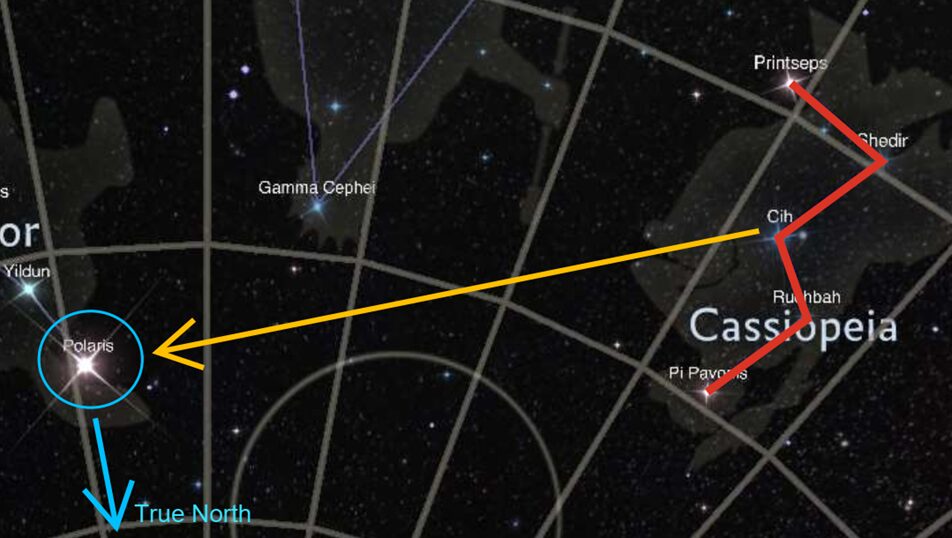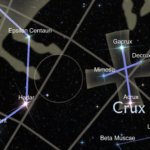Finding the Pole Star with the Constellation of Ursa Major

Only in the Northern Hemisphere is the Pole Star visible, and its location is mainly indicated by the position of the two pointers of the Great Bear (also called the Big Dipper), the Constellation of Ursa Major. These two pointers are the two stars Merak and Dubhe at the frontal wall of the ‘Dipper’. The distance between these two stars is then extended five times in the direction away from the upper side of the dipper, which leads to a medium-light star, Polaris. And Polaris is located directly over True North.
Finding Polaris with the Constellation of Ursa Minor

If you look at the ‘Small Bear’ in the sky, you will see that Polaris is the last star at the end of its tail.
Finding the Polaris with the Constellation of Cassiopeia

Viewed from the Great Bear, on the opposite side of Polaris, the Constellation of Cassiopeia is located. It is also called ‘W in the sky’. In case the Big- or Small Bear is obscured or under the horizon, Cassiopeia is a good alternate locator of Polaris, the brightest star, pointed at by the open arms of the ‘W’-shape of the Constellation. Drawing a vertical line from Polaris to the horizon is nearly exactly True North.
Orientation with the constellation of Orian was described in this article on this website.
Lessons learned from finding direction with the Pole Star:
- Polaris, the Pole Star, is only visible in the Northern Hemisphere
- Find the Great Bear and extend its two pointers five times in the upper direction, which leads to Polaris
- Alternatively, spot the Small Bear, and the last star at its tail is Polaris
- Or the Constellation of Cassiopeia can be used as an alternative for finding the Pole Star.
- True North is directly below the Pole Star on the horizon.
Further readings about Constellation of stars on this website:
Constellation Scorpius at the Southern sky
Finding direction with the Constellation of Orion
Finding True South in the Southern Hemisphere
.





